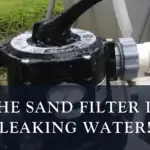Are you tired of watching your beloved succulents wither away despite your best efforts? It’s frustrating, isn’t it?
You see them thriving in Instagram posts and Pinterest boards, yet yours seem to be on a never-ending journey to the plant graveyard. But fear not! You’re about to uncover the secrets to keeping your succulents healthy and happy. Imagine lush, vibrant plants adding that perfect touch to your home decor.
Ready to discover what might be going wrong and how to fix it? Let’s dive in and transform your succulent care routine from struggle to success!

Credit: afewshortcuts.com
Common Mistakes With Succulents
Succulents are popular for their low-maintenance charm. Yet, many struggle to keep them alive. Understanding common mistakes can save your plants. Learn the reasons behind common succulent woes.
Overwatering Issues
Watering succulents is tricky. They store water in their leaves. Too much water causes root rot. It suffocates roots. Your succulent may look healthy. But roots are dying. Check soil moisture before watering. Let soil dry completely between waterings. Use a pot with drainage holes. It prevents water from collecting.
Inadequate Light Exposure
Succulents need sunlight. They thrive in bright spots. Lack of light causes stretching. Leaves grow long and thin. Colors fade and look dull. Place your succulents near windows. South or east-facing windows work well. Rotate them for even sunlight exposure.
Poor Soil Selection
Succulents need specific soil. Regular potting soil retains too much moisture. Choose gritty, well-draining soil. Cactus mix works well. It prevents water from pooling. Avoid heavy garden soil. It compacts easily and suffocates roots. Add sand or perlite for better drainage.
Watering Techniques For Succulents
Proper watering techniques for succulents can save your plants. Many people struggle to maintain the right balance. Knowing how much water succulents need is crucial. These plants store water in their leaves. So, they don’t need frequent watering. Let’s dive into the essentials of watering succulents effectively.
Understanding Succulent Hydration Needs
Succulents are desert plants. They thrive in dry conditions. Their leaves act as water reservoirs. This means they need less water than other plants. Avoid watering them like regular houseplants. Let the soil dry completely between waterings. This helps mimic their natural habitat.
Signs Of Overwatering And Underwatering
Overwatering is common. Check for mushy leaves. This indicates too much water. Roots can rot if soil stays wet. Underwatering shows differently. Leaves wrinkle and look dry. This means they lack moisture. Observing these signs can help adjust your watering habits.
Ideal Lighting Conditions
Succulents are popular for their beauty and resilience. Yet, many struggle to keep them alive. One key factor is light. This is crucial for their growth and survival. Proper lighting ensures your succulents thrive. Too much or too little light can be harmful. Understanding the ideal lighting conditions is essential. It helps prevent your succulents from dying.
Natural Vs. Artificial Light
Natural light is often the best for succulents. They thrive in bright, indirect sunlight. Direct sunlight can scorch their leaves. If natural light isn’t enough, artificial lights can help. LED grow lights are a good option. They provide the right spectrum for succulents. Position them 6-12 inches above the plants. This mimics the sun’s rays effectively.
Identifying Light Stress
Light stress can harm succulents. Look for signs to identify it. Yellowing leaves indicate too much light. Stretching or elongating means not enough light. Leaves may turn red under excess sunlight. Adjust the light source accordingly. Relocate your plant if necessary. Observe changes in the plant’s appearance. This helps maintain the right balance.

Credit: www.wildinteriors.com
Choosing The Right Soil
Struggling with dying succulents? The secret often lies in the soil choice. Succulents need well-draining soil to thrive. Too much moisture leads to rot, so opt for gritty, sandy mixes. Adjusting your soil can save your plants and keep them vibrant and healthy.
Choosing the right soil for your succulents is a crucial step in ensuring their health and longevity. Many plant enthusiasts, myself included, have seen beautiful succulents wither away due to poor soil choices. What makes succulent soil so special, and why does it seem like they’re so picky? Let’s dive into the specifics of soil needs for these desert-loving plants.Importance Of Drainage
Good drainage is not just important; it’s essential for succulent survival. Unlike typical houseplants, succulents store water in their leaves and roots. This means they need soil that dries out quickly to prevent root rot. Imagine pouring water into a bucket with holes at the bottom versus one without. Which one drains faster? Your soil should mimic the bucket with holes, allowing excess water to escape easily. Consider placing your succulents in pots with drainage holes to further enhance this effect.Types Of Soil Mixes
Not all soil mixes are created equal. Standard potting soil is too dense for succulents. It retains moisture for too long, which can drown your plants. Instead, opt for a cactus or succulent-specific mix available at garden centers. These mixes typically contain a blend of sand, perlite, and pumice, which promotes better drainage. You can also create your own mix by combining two parts potting soil with one part sand and one part perlite or pumice. Adjusting the ratio can accommodate different humidity levels in your home. Have you tried mixing your soil before? It might be the game-changer your succulents need. Remember, the right soil doesn’t just support plant growth; it prevents disease and decay. Next time you find a droopy succulent, ask yourself if the soil is up to par. Your plants will thank you!Temperature And Humidity Considerations
Succulents often die due to improper temperature and humidity. These plants thrive in warm, dry conditions. High humidity and cold temperatures can cause root rot and fungal issues. Adjusting environmental conditions can help.
Keeping succulents healthy can be a challenge, especially when it comes to managing temperature and humidity. These hardy plants often come from arid environments, which makes them quite sensitive to changes in their surroundings. To prevent your succulents from wilting away, it’s crucial to understand their needs regarding temperature and humidity.Adapting To Seasonal Changes
Succulents, like many plants, have their own seasonal preferences. During summer, they thrive in warmer temperatures but can suffer if exposed to extreme heat. Conversely, winter can be tricky as cold temperatures can stress them out. I remember the first time I left my succulents outside during an unexpected cold snap. They didn’t last the week. To avoid this, check the weather and adapt your care routine. Bringing them indoors during cold spells can make a big difference.Humidity Levels For Healthy Growth
Most succulents prefer low humidity, but not too dry. High humidity can lead to rot, while extremely dry air can dehydrate them. Finding a balance is key. You might wonder how to manage humidity levels. Simple tricks like placing a tray of water near your succulents can help if the air is too dry. Conversely, in overly humid environments, using a dehumidifier can prevent mold and mildew. Have you ever noticed your succulent leaves turning mushy? That’s a sign of too much humidity. Adjusting your environment slightly could save your plant. Understanding these small but significant factors can transform your succulent care routine, turning you into a pro caretaker. Wouldn’t it be rewarding to see your succulents flourish with just a few simple adjustments?
Credit: www.succulentsandsunshine.com
Pest And Disease Management
Succulents are hardy plants but can be vulnerable to pests and diseases. Proper pest and disease management is key to maintaining healthy succulents. Understanding common pests and diseases helps in taking preventive measures.
Common Pests Affecting Succulents
Common pests include mealybugs, aphids, and spider mites. Mealybugs appear as white cottony spots on leaves. They suck sap, weakening the plant. Aphids are small, green, or black insects. They cluster on new growth, also sucking sap. Spider mites are tiny and cause leaves to look dusty. They spin webs under leaves. These pests can spread quickly if not controlled.
Preventing And Treating Diseases
Proper care reduces the risk of diseases. Overwatering can cause root rot. Ensure soil drains well to prevent this. Fungal infections are another threat. They often show as black spots on leaves. Keep plants in a well-ventilated area. Ensure each plant has space to breathe. Use neem oil or insecticidal soap for treatment. Regularly check plants for signs of disease. Early detection helps in swift treatment.
Repotting And Propagation Tips
Succulents are popular for their easy care and striking appearance. Yet, many struggle with keeping them alive. Learning how to repot and propagate can save your plants. These tips help you understand the process better.
When To Repot
Repotting is crucial for succulent health. You should repot when roots outgrow the pot. Also, if the soil stays wet too long, consider repotting. Fresh soil helps prevent root rot. Spring is the best time for this task.
Propagation Techniques
Propagating succulents is an easy way to grow your collection. Leaf cuttings are popular and simple. Gently twist a healthy leaf from the stem. Let it dry for a day before planting. Use a shallow tray with soil to root the leaf.
Stem cuttings offer another method. Cut a healthy stem with a sharp tool. Allow it to dry for a few days. Then, place it in soil. Water sparingly until roots form. Both techniques require patience and care.
Choosing The Right Containers
Poor container choice often leads to dying succulents. Ensure proper drainage to prevent root rot. Opt for breathable pots that allow air circulation. This will help maintain healthy succulents.
Choosing the right containers for your succulents is crucial to their survival and growth. Without the right pot, you might find your plants struggling, even when you’re doing everything else right. Have you ever bought a beautiful succulent, only to watch it wither away? The problem might just be the container it’s in. Let’s dive into how the materials, size, and shape of your pot can make a difference in your succulent’s health.Benefits Of Different Materials
The material of your pot can greatly affect how much water your succulent retains. Clay pots are popular because they absorb excess moisture, helping prevent overwatering—a common cause of succulent death. On the other hand, plastic pots keep moisture in, which can be beneficial in dry climates where water evaporates quickly. Ceramic pots often come with beautiful designs but lack the breathability of clay. If you’re using a ceramic pot, consider drilling additional drainage holes to help your succulent thrive. Do you find your plants drying out too quickly or staying too wet? It might be time to experiment with different materials.Size And Shape Considerations
The size and shape of your pot can determine how well your succulent’s roots develop. A pot that’s too small will restrict root growth, making it hard for the plant to access nutrients. Conversely, a pot that’s too large can hold too much water, leading to root rot. Opt for a pot that’s slightly bigger than the succulent’s root system to allow room for growth without overwhelming the plant with too much soil. Have you ever noticed succulents growing in shallow, wide pots? This is because they prefer spreading their roots horizontally rather than deep. Consider the shape as well. A pot with a narrow top can trap moisture, while one with a wide opening allows for better air circulation. Try different configurations to see what works best for your plants and environment. By choosing the right container, you can create a nurturing home for your succulents, helping them not just survive, but thrive.Frequently Asked Questions
Why Do Succulents Rot Quickly?
Succulents rot from too much water. They need well-draining soil. Water sparingly and avoid humid environments.
How Often Should I Water Succulents?
Water succulents every 1-2 weeks. Let soil dry between watering. They prefer drought conditions.
Can Succulents Thrive Indoors?
Yes, succulents can thrive indoors. They need sunlight and proper care. Place near windows for light.
Why Are My Succulents Turning Brown?
Brown leaves signal sunburn or underwatering. Check sun exposure and watering routine. Adjust as needed.
What Type Of Soil Is Best For Succulents?
Succulents need well-draining soil. Use cactus mix or add sand to potting soil. Prevents root rot.
Conclusion
Caring for succulents can be tricky, but not impossible. Ensure they get enough light. Check the soil for proper drainage. Water them sparingly to avoid root rot. Temperature matters; keep them warm. Choose the right pot for growth. Observe your plants regularly.
Identify any issues early. With patience and attention, your succulents can thrive. Remember, small changes make big differences. Your green thumb is just around the corner. Keep learning and experimenting. Enjoy the journey of nurturing these resilient beauties. Happy gardening!




